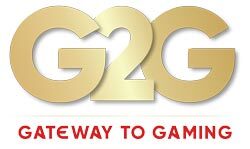The gaming industry is a huge business in the United States of America (USA), adding an estimated USD 240 billion to the economy every year, and also generating a whopping USD 38 billion in tax revenues and providing around 17 million jobs prior to Covid-19 pandemic. Video poker machines, slot machines and other electronic gaming devices form the lion’s share of all the economic activity.
These devices, for instance, at casinos in South Dakota and Iowa, make as much as 89 per cent of the gaming revenue per year. The spinning-reel slot, especially, is a profit-making force for several casinos, surpassing table games such as video poker machines, blackjack and other gambling games. What makes the slot machines a reliable lucrative source is that the casinos have a knack for hiding their true price from the players, including the most astute gamblers.
Cost of a slot
As the law of supply and demand goes, when the price increases, the demand goes down. But that holds true only if there is price transparency as it exists in our daily purchases that people generally make. For instance, when an item is bought from a supermarket, the consumer knows the exact price of it before they make the purchase. And same is the case in most places where money gets exchanged, except in places such as a medical clinic or a vehicle service centre.
In the slots, on the other hand, the element of unfamiliarity is even greater in the sense that the true price of the wager is unknown to most players. Casino operators generally think of a price based on what is considered to be the average or expected house margin on a bet placed by the gamblers.
For instance, if a game has a typical 10 per cent house advantage, it means that over a long period, the game would give back 10 per cent of the entirety of the wagers to the casino. Hence, if it receives USD 10 million in wagers for 20 million spins, it would be expected to spend USD 9 million, leading to a benefit of USD 1 million. The “price” collected by the casino over a period, from the players, is 10 per cent.
The gamblers, on the other hand, are likely to consider the cost of the spin as the price. For instance, if a gambler bets USD 10 for a spin and gains no payout, they would observe the 10 bucks as the price, and not USD 1. Here, both parties are right in some sense. But the management knows that, although it has collected 10 bucks from the player, USD 9 will be paid out to other players in due course. And this works in favour of a casino in the long run.
Long-term and short-term
An important takeaway that people must be aware of regarding casinos is that the difference in the way the price is viewed is between the short-term perspective of players and the long-term perspective of the management. Let’s say, John, walks into a casino with USD 100 to spend for about an hour.
There are three possible ways this could end for John – he loses all the money, wins a mega jackpot, or wins or loses some money and heads out before his money is wiped out. The first end result occurs with far more regularity and it is for the casinos to maintain a house advantage. And it is from these frequent losers the casinos gather funds to pay for the big jackpot.
Price hike
Although the players realise that the likelihood of losing money little by little is more than winning a huge amount at once, they keep playing for a lengthy period in search of that one mega jackpot that would well and truly compensate for all the losses and more. At the end of the day, casinos sell excitement with the element of hope.
Even though a casino has a small house advantage, say 5 per cent per slot, it is still very likely to win all of John’s money within no time. This is mainly due to the variations in the pay table, listing credits awarded for different winning symbol combinations. While the pay table is shown to the players, the probability of producing each winning combination is obviously concealed. This enables the casino to raise the price (as viewed by the management) without the knowledge of players.
Casinos can sometimes refrain themselves from raising the house advantage of the slots too frequently or by too much so that players do not realise the price change. And if they do realise, it could result in players migrating to other casinos. According to research by The Conversation, raises in the house advantage have resulted in a sizeable profit in revenue with no signs of players, including the savvy ones, realising the price hike.
Several comparisons of two identical reel games showed that high-priced games garnered much higher revenue. Research also concluded that there was no evidence of player migration from high-priced games even if their cheaper counterparts were only metres away. Hence, it is safe to say that reel slot machines are something to be avoided for price-conscious gamblers.



